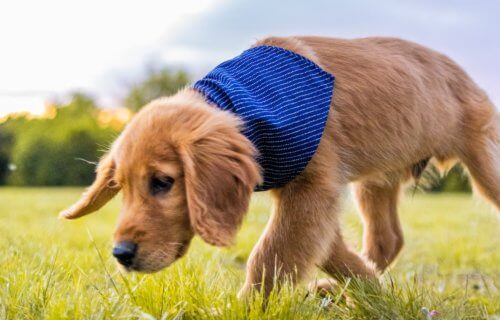GENOVA, Italy — Ever wonder how animals get so good at tracking down what they’re looking for by scent alone? New computer modeling research finds that this seemingly random behavior among foraging mammals is actually all part of a clever scent strategy that takes advantage of the physics of how odors travel through the air and along the ground.
“We used what we know about how scent is carried by the wind and on the ground to understand better why animals engage in this behavior,” explains co-lead study author Nicola Rigolli, a postdoctoral research fellow at the Machine Learning Genoa Center at the University of Genova, in a media release. “We then used machine learning techniques to identify the optimal strategy for locating the source of a scent.”
Through a series of experiments, researchers created various computer simulations depicting how scents move in a turbulent environment. Next, they modeled the pros and cons of different “scent-tracking strategies” seen among animals. According to those models, a computer-simulated animal designed to track and locate a scent as quickly as possible would alternate between sniffing the air and casting along the surface of the ground to find the smell.
When an animal finds itself far downwind from a particular scent, it will usually pause and rear itself up to catch a better whiff. This higher angle provides better odds of smelling a distant scent in the air. Then, as the animal closes in on the source of the smell, they’ll usually start sniffing the ground more frequently, while still pausing to smell the air occasionally.
“Airborne scents are sparse and more difficult to track than scents along the ground, but they move faster and over longer distances. The benefits of sniffing near the ground or in the air therefore vary depending on the animal’s distance from the scent’s source,” explains co-lead study author Gautam Reddy.
Do animals in the sea do the same thing?
Interestingly, study authors say these findings may also apply to sea creatures like crabs or mollusks. These aquatic creatures also tend to move their bodies at different heights while tracking potential food sources. However, researchers admit their model is very much a simplified version of what happens in nature. Their model does not account for every possible variable that may affect an animal’s behavior. For instance, animals may not have the same memory capacity as a computer, and those memory limitations may influence behavior.
“We hope our results inspire other scientists to conduct experiments with dogs, rodents and aquatic animals that can help us learn more about these behaviors in real-world settings,” concludes senior study author Massimo Vergassola.
Initially, Vergassola led this research while working at UC San Diego as a professor of physics, before continuing the work at the Laboratoire de physique de l’École Normale Supérieure, Sorbonne Université, Paris. Vergassola collaborated with fellow senior author, Agnese Seminara, a professor of fluid dynamics at the University of Genoa.
The study is published in the journal eLife.

